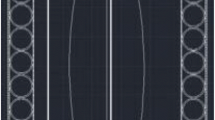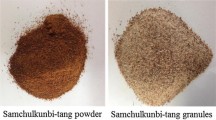Abstract
The main purpose of the study was to develop valsartan floating tablets (VFT) via non-effervescent technique using low density polypropylene foam powder, carbopol, and xanthan gum by direct compression. Before compression, the particulate powdered mixture was evaluated for pre-compression parameters. The prepared valsartan tablets were evaluated for post-compression parameters, swelling index, floating lag time, in vitro buoyancy studies, and in vitro and in vivo X-ray imaging studies in albino rabbits. The result of all formulations for pre- and post-compression parameters were within the limits of USP. FTIR and DSC studies revealed no interaction between the drug and polymers used. The prepared floating tablets had good swelling and floating capabilities for more than 12 h with zero floating lag time. The release of valsartan from optimized formulation NF-2 showed sustained release up to 12 h; which was found to be non-Fickian release. Moreover, the X-ray imaging of optimized formulation (NF-2) revealed that tablet was constantly floating in the stomach region of the rabbit, thereby indicating improved gastric retention time for more than 12 h. Consequently, all the findings and outcomes have showed that developed valsartan matrix tablets could be effectively used for floating drug delivery system.






Similar content being viewed by others
References
Gangadharappa HV, Pramod Kumar TM, Shivakumar HG. Gastric floating drug delivery systems. Ind J Pharm Educ Res. 2007;41:295–305.
Lopes CM, Bettencourt C, Rossi A, Buttini BP. Overview on gastroretentive drug delivery systems for improving drug bioavailability. Int J Pharm. 2016;510(1):144–58. https://doi.org/10.1016/j.ijpharm.2016.05.016.
Garg T, Kumar A, Rath G, Goyal AK. Gastroretentive drug delivery systems for therapeutic management of peptic ulcer. Crit Rev Ther Drug Carrier Syst. 2014;31:531–57. https://doi.org/10.1615/CritRevTherDrugCarrierSyst.2014011104.
Kumar M, Kaushik D. An overview on various approaches and recent patents on gastroretentive drug delivery systems. Recent Pat Drug Deliv Formul. 2018;12(2):84–92. https://doi.org/10.2174/1872211312666180308150218.
Vashisth P, Raghuwanshi N, Srivastava AK, Singh H, Nagar H, Pruthi V. Ofloxacin loaded gellan/PVA nanofibers-synthesis, characterization and evaluation of their gastroretentive/mucoadhesive drug delivery potential. Mater Sci Eng C. 2017;71:611–9. https://doi.org/10.1016/j.msec.2016.10.051.
Wang J, Tabata Y, Bi D, Morimoto K. Evaluation of gastric mucoadhesive properties of aminated gelatin microspheres. J Control Release. 2001;73:223–31. https://doi.org/10.1016/S0168-3659(01)00288-7.
Singh B, Chakkal SK, Ahuja N. Formulation and optimization of controlled release mucoadhesive tablets of atenolol using response surface methodology. AAPS Pharm Sci Tech. 2006;7:E2–E10. https://doi.org/10.1208/pt070103.
Chaturvedi K, Umadevi S, Vaghani S. Floating matrix dosage form for propranolol hydrochloride based on gas formation technique: development and in vitro evaluation. Sci Pharm. 2010;78(4):927–40. https://doi.org/10.3797/scipharm.0909-02.
Deshpande AA, Shah NH, Rhodes CT, Malick W. Development of a novel controlled-release system for gastric retention. Pharm Res. 1997;14:815–9. https://doi.org/10.1023/A:1012171010492.
Upadhye AA, Ambike AA, Mahadik KR, Paradkar A. Application of ion exchange resin in floating drug delivery system. Drug Dev Ind Pharm. 2008;34:1117–24. https://doi.org/10.1080/03639040801973982.
Atyabi F, Sharma HL, Mohammad HA, Fell JT. A novel floating system using ion exchange resins. In Proc Int Symp Control Release Bioact Mater. 1994;21:806–807.
Atyabi F, Sharma HL, Mohammad HAH, Fell JT. Controlled drug release from coated floating ion exchange resin beads. J Control Release. 1996;42:25–8.
Arora S, Ali J, Ahuja A, Khar RK, Baboota S. Floating drug delivery systems: a review. AAPS Pharm Sci Tech. 2005;6:E372–90. https://doi.org/10.1208/pt060347.
Meka L, Kesavan B, Chinnala KM, Vobalaboina V, Yamsani MR. Preparation of a matrix type multiple-unit gastro retentive floating drug delivery system for captopril based on gas formation technique: in vitro evaluation. AAPS PharmSciTech. 2008;9:612–9. https://doi.org/10.1208/s12249-008-9090-4.
Gambhire MN, Ambade KW, Kurmi SD, Kadam VJ, Jadhav KR. Development and in vitro evaluation of an oral floating matrix tablet formulation of diltiazem hydrochloride. AAPS PharmSciTech. 2007;8:E1–9. https://doi.org/10.1208/pt0803073.
Chen YC, Ho HO, Chiu CC, Thau-Sheu M. Development and characterization of a gastroretentive dosage form composed of chitosan and hydroxyethyl cellulose for alendronate. Drug Des Dev Ther. 2014;8:67–78. https://doi.org/10.2147/DDDT.S52791.
Jiménez-Castellanos MR, Zia H, Rhodes CT. Design and testing in vitro of a bioadhesive and floating drug delivery system for oral application. Int J Pharm. 1994;105:65–70. https://doi.org/10.1016/0378-5173(94)90236-4.
Alladi KK, Suram R, Bela M, Kiran S, Ramesh V, Narendera Y. Formulation and characterization of clarithromycin controlled release bioadhesive tablets. J Chem Pharm Res. 2011;3:684–90.
Ponchel G, Irache JM. Specific and non-specific bioadhesive particulate systems for oral delivery to the gastrointestinal tract. Adv Drug Deliv Rev. 1998;34:191–219. https://doi.org/10.1016/S0169-409X(98)00040-4.
Sujja-Areevath J, Munday DL, Cox PJ, Khan KA. Relationship between swelling, erosion and drug release in hydrophillic natural gum mini-matrix formulations. Eur J Pharm Sci. 1998;6:207–17. https://doi.org/10.1016/S0928-0987(97)00072-9.
Zuelger S, Fassihi R, Lippold BC. Polymer particle erosion controlling drug release II. Swelling investigations to clarify the release mechanism. Int J Pharm. 2002;247:23–37. https://doi.org/10.1016/S0378-5173(02)00362-9.
Kedzierewicz F, Thouvenot P, Lemut J, Etienne A, Hoffman M, Maincent P. Evaluation of peroral silicone dosage forms in humans by gamma-scintigraphy. J Control Release. 1999;58:195–205. https://doi.org/10.1016/S0168-3659(98)00154-0.
Fix JA, Cargill R, Engle K. Controlled gastric emptying. III. GR time of a nondisintegrating geometric shape in human volunteers. Pharm Res. 1993;10:1087–19. https://doi.org/10.1023/A:1018939512213.
Cargill R, Caldwell LJ, Engle K, Fix JA, Porter PA, Gardner CR. Controlled gastric emptying. 1. Effects of physical properties on gastric residence times of nondisintegrating geometric shapes in beagle dogs. Pharm Res. 1988;5:533–6. https://doi.org/10.1023/A:1015981627525.
El-Said IA, Aboelwafa AA, Khalil RM, ElGazayerly ON. Baclofen novel gastroretentive extended release gellan gum superporous hydrogel hybrid system: in vitro and in vivo evaluation. Drug Deliv. 2016;23:101–12. https://doi.org/10.3109/10717544.2014.905654.
Kikuchi A, Okano T. Pulsatile drug release control using hydrogels. Adv Drug Deliv Rev. 2002;54:53–77. https://doi.org/10.1016/S0169-409X(01)00243-5.
Rajeswari RK, Abbulu K, Sudhakar M, Roopakarki, Rajkumar B. Design and in vitro evaluation of modified release Valsartan hydrogels. Int J Drug Deliv. 2011;3:648–60.
Fabregas JL, Claramunt J, Cucala J, Pous R, Siles A. “In vitro” testing of an antacid formulation with prolonged GR time (Almagate Flot-Coat®). Drug Dev Ind Pharm. 1994;20:1199–212. https://doi.org/10.3109/03639049409038361.
Prajapati VD, Jani GK, Khutliwala TA, Zala BS. Raft forming system-an upcoming approach of gastroretentive drug delivery system. J Control Release. 2013;168:151–65. https://doi.org/10.1016/j.jconrel.2013.02.028.
Kawashima Y, Niwa T, Takeuchi H, Hino T, Itoh Y. Hollow microspheres for use as a floating controlled drug delivery system in the stomach. J Pharm Sci. 1992;81:135–40. https://doi.org/10.1002/jps.2600810207.
Li Z, Xu H, Li S, Li Q, Zhang W, Ye T, et al. A novel gastro-floating multiparticulate system for dipyridamole based on a porous and low-density matrix core: in vitro and in vivo evaluation. Int J Pharm. 2014;461:540–8. https://doi.org/10.1016/j.ijpharm.2013.12.024.
Davis S, Stockwell A, Taylor M, Hardy J, Whalley D, Wilson CG. The effect of density on the gastric emptying of single- and multiple-unit dosage forms. Pharm Res. 1986;3:208–13. https://doi.org/10.1023/A:1016334629169.
Malik R, Garg T, Goyal AK, Rath G. Polymeric nanofibers: targeted gastro-retentive drug delivery systems. J Drug Target. 2015;23:109–24. https://doi.org/10.3109/1061186X.2014.965715.
Bader M. Renin-angiotensin aldosterone system. In: Offermanns S, Rosenthal W, editors. Encyclopedic reference of molecular pharmacology. Berlin, Germany: Springer; 2004. p. 810–4.
Diovan. [Electronic version]. e-CPS. Retrieved 28th December 2009.
Prasanthi S, Vidyavathi M. Optimization of Valsartan Floating Tablets by 32 Factorial Design. Asian J Pharm. 2017;11(3):S625–34. https://doi.org/10.22377/ajp.v11i03.1470.
Swathi G, Choudary KPR, Rao AM. Formulation development of valsartan floating tablets employing a new modified starch optimization by 23 factorial design. IAJPS. 2017;4:793–801. https://doi.org/10.20959/wjpps20173-8836.
Getyala A, Gangaharappa HV, Prasad MS, Reddy MP, Kumar TM. Formulation and evaluation of non-effervescent floating tablets of losartan potassium. Curr Drug Deliv. 2013;10:620–9.
Martin A, Bustamante P, Chum AHC. Physical Pharmacy. New Delhi: BI Waverly Pvt Ltd; 1996. p. 423–52.
United State Pharmacopeia (USP) XXVI (2003) US Pharmacopoeial Convention, CD Rom version.
Gupta KR, Wadodkar AR, Wadodkar SG. UV-spectrophotometric methods for estimation of valsartan in bulk and tablet dosage form. Int J ChemTech Res. 2010;2:985–9.
El-Gibaly I. Development and in vitro evaluation of novel floating chitosan microcapsules for oral use: comparison with non-floating chitosan microspheres. Int J Pharm. 2002;249:7–21. https://doi.org/10.1016/S0378-5173(02)00396-4.
Salunke PA, Bakliwal SR, Rane BR, Suryawanshi, Pawar SP. Formulation and evaluation of floating microcarriers of an antidiabetic drug a comparative study of effervescent agent. Int J Pharm Tech. 2010;2:496–512.
Acharya S, Patra S, Pani NR. Optimization of HPMC and carbopol concentrations in non-effervescent floating tablet through factorial design. Carbohydr Polym. 2014;102:360–8. https://doi.org/10.1016/j.carbpol.2013.11.060.
Patel HM, Prajapati BG, Patel AK. Controlled release gastroretentive dosage form of verapamil HCl. Int J PharmTech Res. 2009;1:215–21.
ulla MR, Saisivam S. Floating matrix tablet of losartan potassium by using hydrophilic swelling polymer and natural gum. Turk J Pharm. 2013;10:435–46.
Korsmeyer RW, Gurny R, Doelker E, Buri P, Peppas NA. Mechanisms of solute release from porous hydrophilic polymers. Int J Pharm. 1983;15:25–35. https://doi.org/10.1016/0378-5173(83)90064-9.
Peppas NA, Franson NM. The swelling Interface number as a criterion for prediction of diffusional solute release mechanisms in swellable polymers. J Polym Sci Polym Phys. 1983;21:983–97. https://doi.org/10.1002/pol.1983.180210614.
Saisivam S, Rahamath Ulla M, Shakeel F. Development of floating matrix tablets of losartan potassium: in vitro and in vivo evaluation. J Drug Del Sci Tech. 2013;23:611–7. https://doi.org/10.1016/S1773-2247(13)50093-1.
ICH harmonized tripartite guidelines. Stability testing of new drug substances and products. Q1A (R2). Fed Regist. 2003;68:65717–8.
Srikanth MV, Rao NS, Sunil SA, Ram BJ, Kolapalli VRM. Statistical design and evaluation of a propranolol HCl gastric floating tablet. Acta Pharm Sin B. 2012;2:60–9. https://doi.org/10.1016/j.apsb.2011.12.008.
Tadros MI. Controlled release efferevescent floating matrix tablets of ciprofloxacin hydrochloride: development, optimization and in vitro-in vivo evaluation in healthy human volunteers. Eur J Pharm Biopharm. 2010;74:332–9. https://doi.org/10.1016/j.ejpb.2009.11.010.
Motukuri R, Nagesh P, Venisetty RK. Development and evaluation of gastric retentive floating tablets of Nizatidine. IJPRBS. 2014;3:252–76.
Streubel A, Siepmann J, Bodmeier R. Floating matrix tablets based on low density foam powder: effects of formulation and processing parameters on drug release. Eur J Pharm Sci. 2003;18:37–45. https://doi.org/10.1016/S0928-0987(02)00223-3.
Gangadharappa HV, Rahamath-Ulla M, Pramod-Kumar TM, Shakeel F. Floating drug delivery system of Verapamil hydrochloride using karaya gum and HPMC. Clin Res Regul Aff. 2010;27:13–20. https://doi.org/10.3109/10601331003604762.
Peppas NA. Analysis of Fickian and non-Fickian drug release from polymers. Pharm Acta Helv. 1985;60:110–1.
Ritger PL, Peppas NAA. Simple equation for description of solute release. II. Fickian and anomalous release from swellable devices. J Control Release. 1987;5:37–42. https://doi.org/10.1016/0168-3659(87)90035-6.
Gangadharappa HV, Biswas S, Getyala A, Gupta V, Kumar TM. Development, in vitro and in vivo evaluation of novel floating hollow microspheres of rosiglitazone maleate. Pharm Lett. 2011;3:299–316.
Acknowledgements
The authors are thankful to Ranbaxy Labs (Hyderabad, India), Membrana GmbH, (Obernburg, Germany), and Shin Etsu Chemicals Co. (Paris, France) for providing the gift sample of valsartan, Accurel®MP1000, carbopol, lactose, and magnesium stearate, respectively.
Author information
Authors and Affiliations
Corresponding author
Ethics declarations
Ethical clearance for the research study that was obtained from the Institutional Animal Ethics Committee of East West College of Pharmacy, Bangalore, Karnataka, India constituted for the purpose.
Conflict of Interest
The authors declare that they have no conflicts of interest.
Additional information
Publisher’s Note
Springer Nature remains neutral with regard to jurisdictional claims in published maps and institutional affiliations.
Rights and permissions
About this article
Cite this article
Rahamathulla, M., Saisivam, S. & Gangadharappa, H.V. Development of Valsartan Floating Matrix Tablets Using Low Density Polypropylene Foam Powder: In vitro and In vivo Evaluation. AAPS PharmSciTech 20, 35 (2019). https://doi.org/10.1208/s12249-018-1265-z
Received:
Accepted:
Published:
DOI: https://doi.org/10.1208/s12249-018-1265-z




